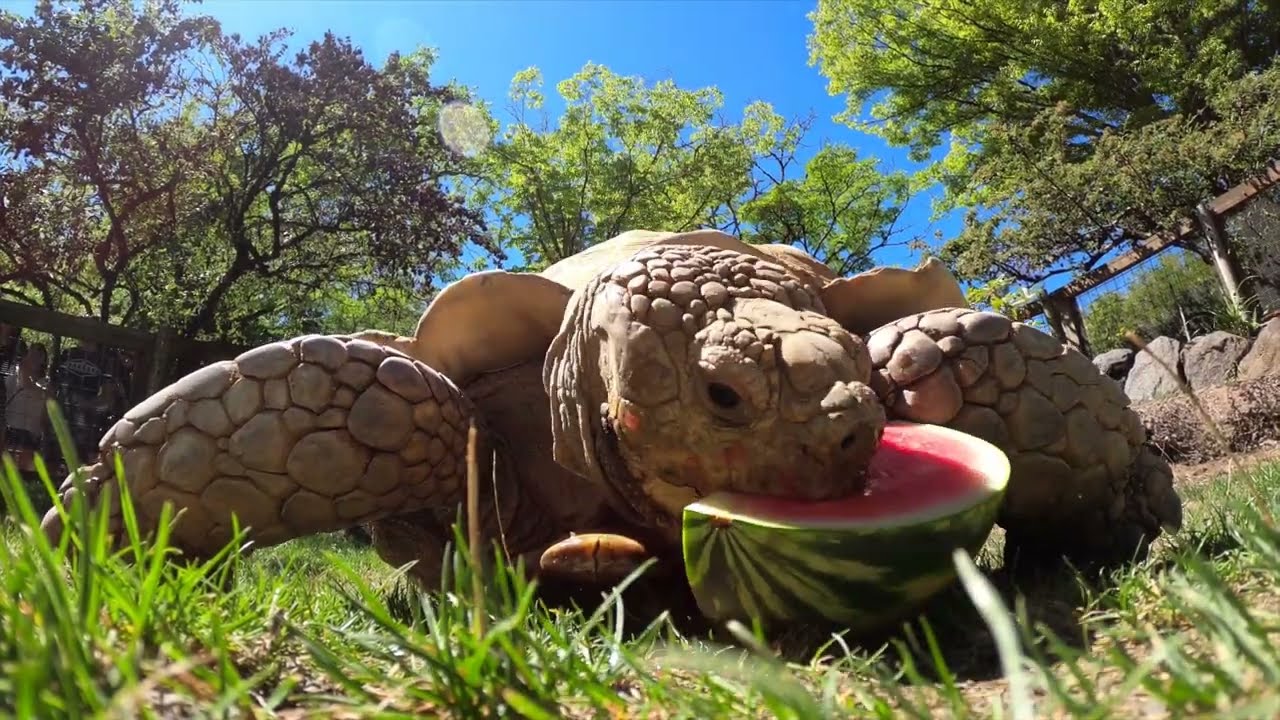- The appeal and fascination of animals squishing juicy watermelons
- Understanding the natural behaviors of animals through enrichment activities
- Benefits of enrichment activities in zoos for animal health and conservation
- Case studies of specific animals participating in the watermelon squishing activity
- Importance of proper zoo management and wildlife conservation practices
Cute Animals Squish Juicy Watermelons Video: A Detailed Exploration
The viral video "Cute Animals Squish Juicy Watermelons" offers more than just adorable moments of animals enjoying their fruity treat. This seemingly lighthearted activity reveals important insights into animal behavior, health, and conservation efforts. While watching elephants, pandas, and tigers crushing watermelons might be entertaining, there’s a rich tapestry of scientific concepts and zoo management practices interwoven in these scenes.
The Appeal and Fascination of Animals Squishing Juicy Watermelons
The appeal of watching animals squish juicy watermelons is rooted in our fascination with the natural world. Animals interacting with objects in unexpected ways can evoke joy, curiosity, and compassion among viewers. This engagement is crucial, especially for educators and conservationists aiming to raise awareness about wildlife issues. By observing these moments, individuals, including children and adults, are more likely to develop a connection with animals, which can foster a deeper interest in wildlife conservation.
The sensory experience provided by watermelons – their texture, taste, and the challenge of breaking them open – stimulates animals’ natural instincts. Elephants, for instance, use their powerful trunks to crush and ingest fruits in the wild. When we see this behavior replicated in a controlled environment, it underscores the importance of understanding and respecting their natural habits.
Understanding Natural Behaviors Through Enrichment
Animal enrichment is a vital component of modern zoological practice. It involves providing stimuli that encourage natural behaviors and enhance overall well-being. The watermelon squishing activity is an excellent example of cognitive and physical enrichment. These activities offer multiple benefits, including mental stimulation, physical exercise, and the expression of innate behaviors.
Observing animals engage with enrichment items provides valuable data for researchers. For instance, a primate’s technique in opening a watermelon might give insights into its cognitive skills and problem-solving abilities. Similarly, the enthusiasm and persistence of a big cat trying to tear through the rind could reflect its natural hunting instincts.
This understanding helps zookeepers tailor enrichment programs more effectively, promoting an animal’s psychological and physiological health. Enrichment not only improves the quality of life for the animals but also makes for more captivating and educational exhibits for zoo visitors.
Benefits of Enrichment Activities in Zoos
Incorporating enrichment into animal care routines promotes physical health by encouraging active behaviors. Regular activity is essential in preventing obesity and other health issues, just as in humans. Furthermore, mentally stimulating tasks help mitigate stress, boredom, and behavioral issues that animals might develop in captivity.
Zoo environments are fundamentally different from natural habitats, and without proper behavioral outlets, animals can experience negative health effects. Enrichment practices like watermelon squishing provide a necessary bridge between these two environments, offering both entertainment and essential stimulation.
Additionally, these enrichment activities play a crucial role in educational outreach. When visitors see animals actively engaging with their surroundings and displaying natural behaviors, it fosters a better understanding and appreciation of wildlife. This can lead to increased support for conservation initiatives and financial contributions to zoos and wildlife programs.
Case Studies: Animals and Their Interaction with Watermelons
Let’s delve into specific examples of how different animals participate in the watermelon squishing activity and the implications thereof.
Elephants: Elephants use their trunks to lift and smash watermelons against surfaces. This mimics the natural foraging behavior elephants exhibit in the wild. Trunk usage showcases their dexterity and strength but also offers mental enrichment as they strategize the best way to crack open the watermelons.
Pandas: Giant pandas are known for their unique diet, primarily consuming bamboo. However, their strong jaws and teeth are capable of handling watermelons too. When pandas engage with watermelons, it provides a different texture and flavor compared to their staple diet, offering beneficial dietary variation.
Tigers: Tigers are apex predators with powerful jaws and claws. In a controlled environment, crushing watermelons allows them to practice their predatory instincts without posing risks to other animals. This type of enrichment can prevent stereotypical behaviors, such as excessive pacing, by providing a challenging and satisfying activity.
Importance of Proper Zoo Management and Wildlife Conservation Practices
Zoo management goes hand in hand with wildlife conservation. Effective zoo management ensures that animals receive the highest standards of care, including well-designed enrichment programs. By maintaining an environment that closely mimics natural habitats, zoos can support the physical and psychological health of their animals.
Moreover, zoos play a pivotal role in conservation by engaging the public, conducting research, and participating in breeding programs. Enrichment activities, such as the watermelon squishing sessions, help highlight these roles to the public. They serve as memorable experiences that can inspire visitors to support broader conservation efforts.
Conservation programs often rely on the knowledge gained from observing animals in zoos. Behavioral studies and veterinary care advancements made in zoological settings contribute significantly to the preservation of species in the wild. Innovations in diet, health monitoring, and environmental enrichment are shared globally, aiding in the conservation of both captive and wild populations.
Conclusively, the "Cute Animals Squish Juicy Watermelons" video is more than merely captivating content. It highlights essential elements of animal behavior, zookeeping, and conservation efforts. These activities and their presentations to the public underscore the intricate balance of education, entertainment, and conservation that modern zoos strive to achieve. Through thoughtful zoo management and ongoing research, activities like these serve as fundamental tools in the mission to preserve and protect wildlife.
*****
Source Description
Happy Watermelon Day!


